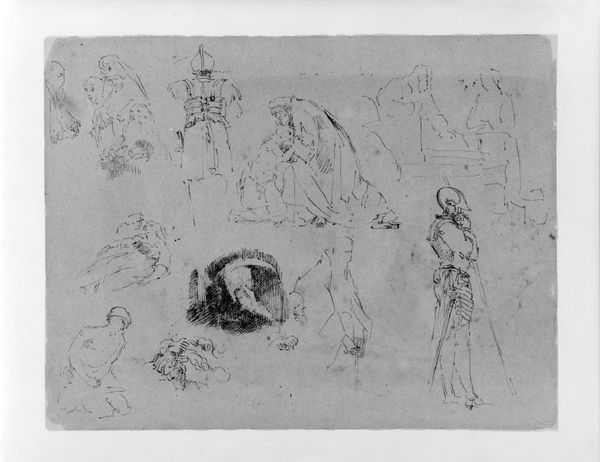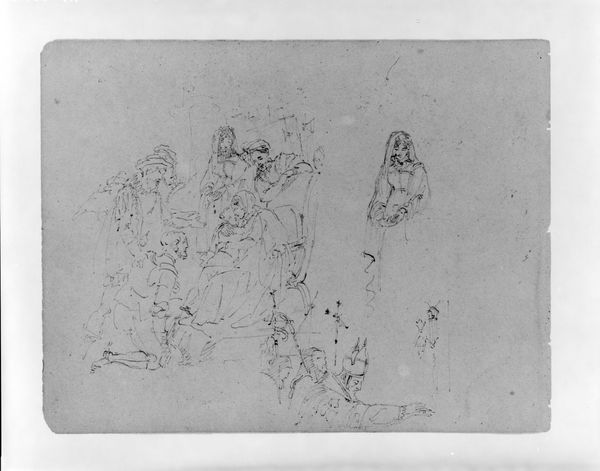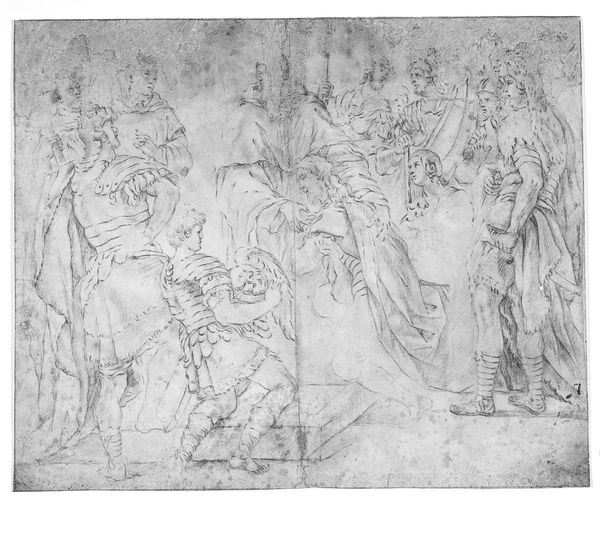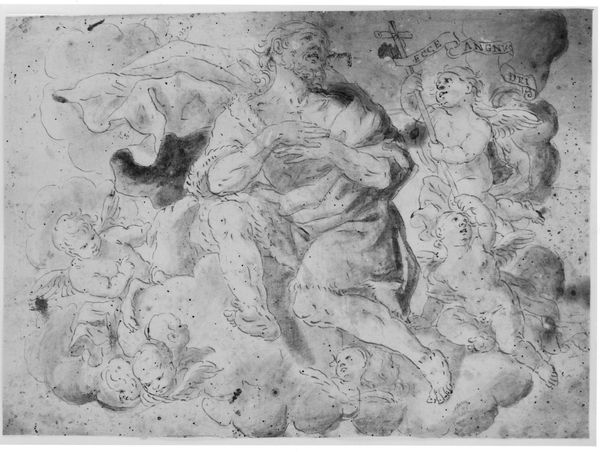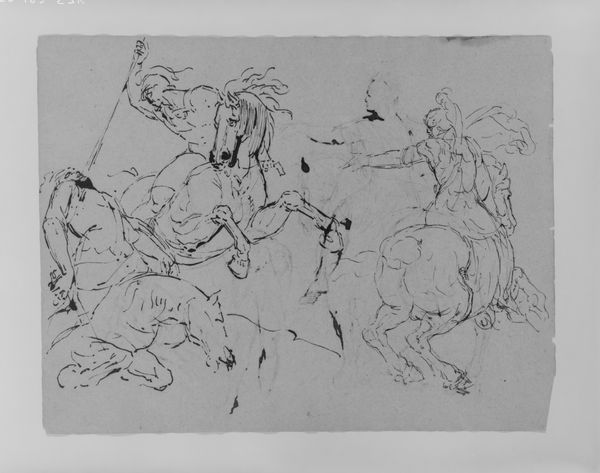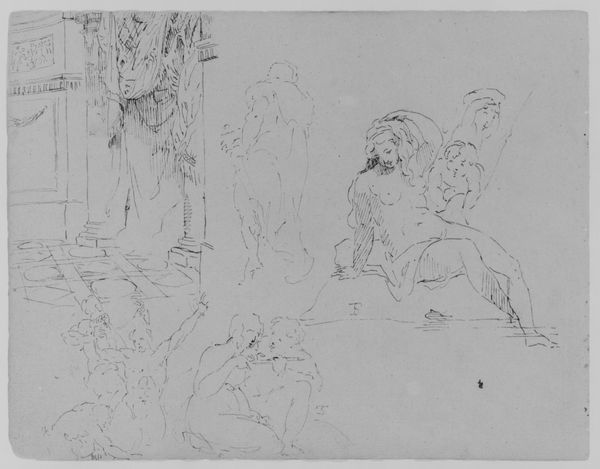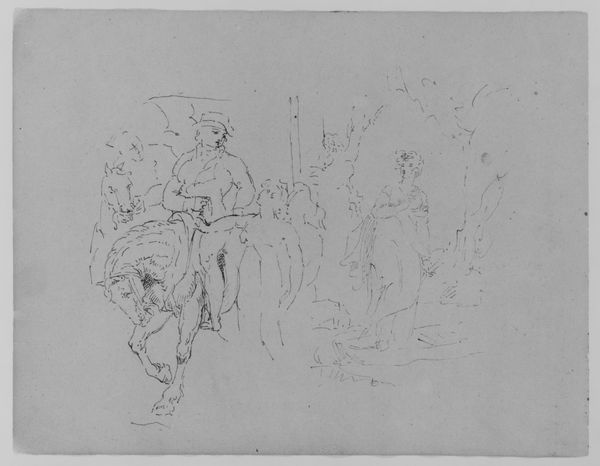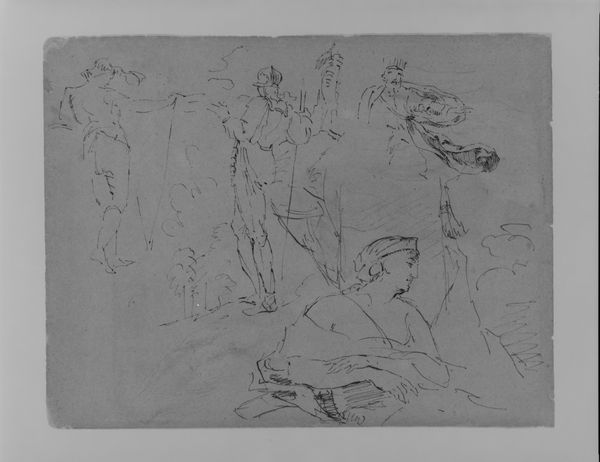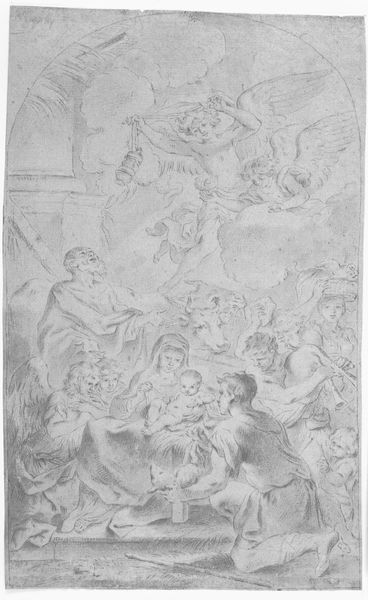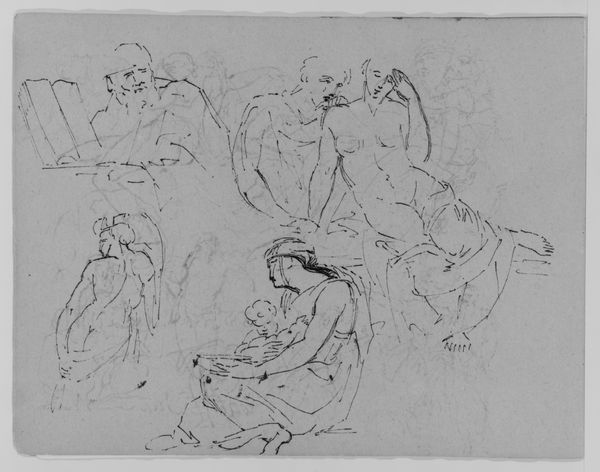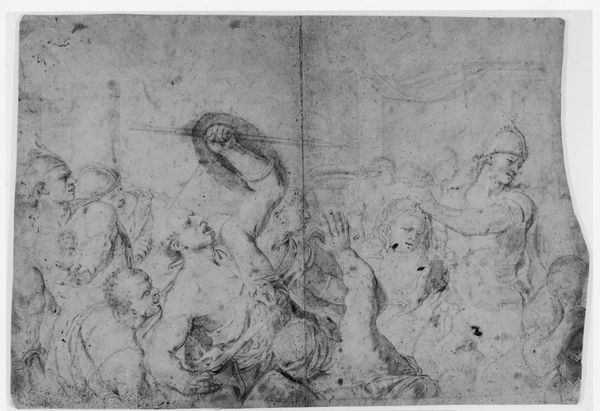
drawing, paper, ink
#
drawing
#
baroque
#
landscape
#
figuration
#
paper
#
ink
#
history-painting
Dimensions: 209 mm (height) x 288 mm (width) (bladmaal)
Curator: This drawing, rendered in ink on paper, captures a serene moment titled "The rest on the Flight into Egypt," believed to be created sometime between 1650 and 1699 by an anonymous hand. Editor: It strikes me as a raw, almost unfinished scene. The delicate lines give it a dreamlike quality, a glimpse into a moment of respite. I’m immediately drawn to the visible texture of the paper itself – the material grounding this depiction of the holy family. Curator: Precisely. Considering its historical context, the “Flight into Egypt” was a common theme in Baroque art, symbolizing refuge and divine protection against persecution. What’s intriguing here is how the artist chose to focus on rest, stillness amidst turmoil. I’m particularly interested in how depictions of motherhood and forced migration reflect the experiences of marginalized people then, and now. Editor: I’m compelled by the seeming simplicity of materials employed – ink and paper only – and what they inherently evoke. Consider the readily available resources and portability they allowed an artist perhaps working outside of traditional patronage. And given the period, were these drawing materials acquired via exploitative trade routes, and what hidden labor facilitated their production? Curator: An important layer to consider. The ambiguity surrounding the artist’s identity further complicates the work. It opens doors for speculating about the intentions behind this depiction – could the choice of style and composition be hinting at something more personal, a reflection of a life shadowed by forced movement? How might considerations about class, gender, and other power dynamics impact what artistic expressions are preserved, or relegated to obscurity? Editor: The question of access and erasure are potent in that period, particularly related to the movement and trade of tangible materials. If one thinks of pigment origins or the paper manufacture of that time… those economic processes dictated the final artifact, impacting visibility in very real ways. Curator: Looking through the lens of the past we reveal insights that resonate so vividly today. It asks us to question not only what we see, but how power shapes perception and artistic survival. Editor: Absolutely. Even in a seemingly simple drawing like this, materiality whispers a layered story of resources, labor, and perhaps, the unseen forces that shape the world we inherit.
Comments
No comments
Be the first to comment and join the conversation on the ultimate creative platform.
